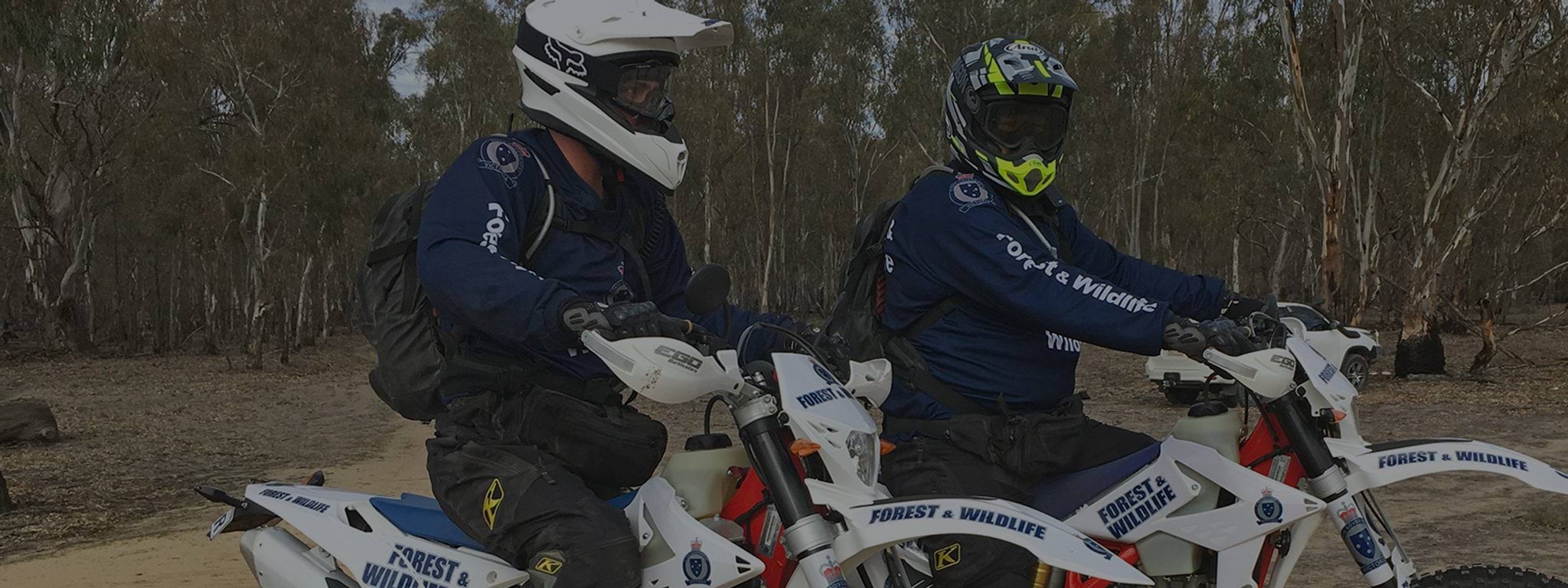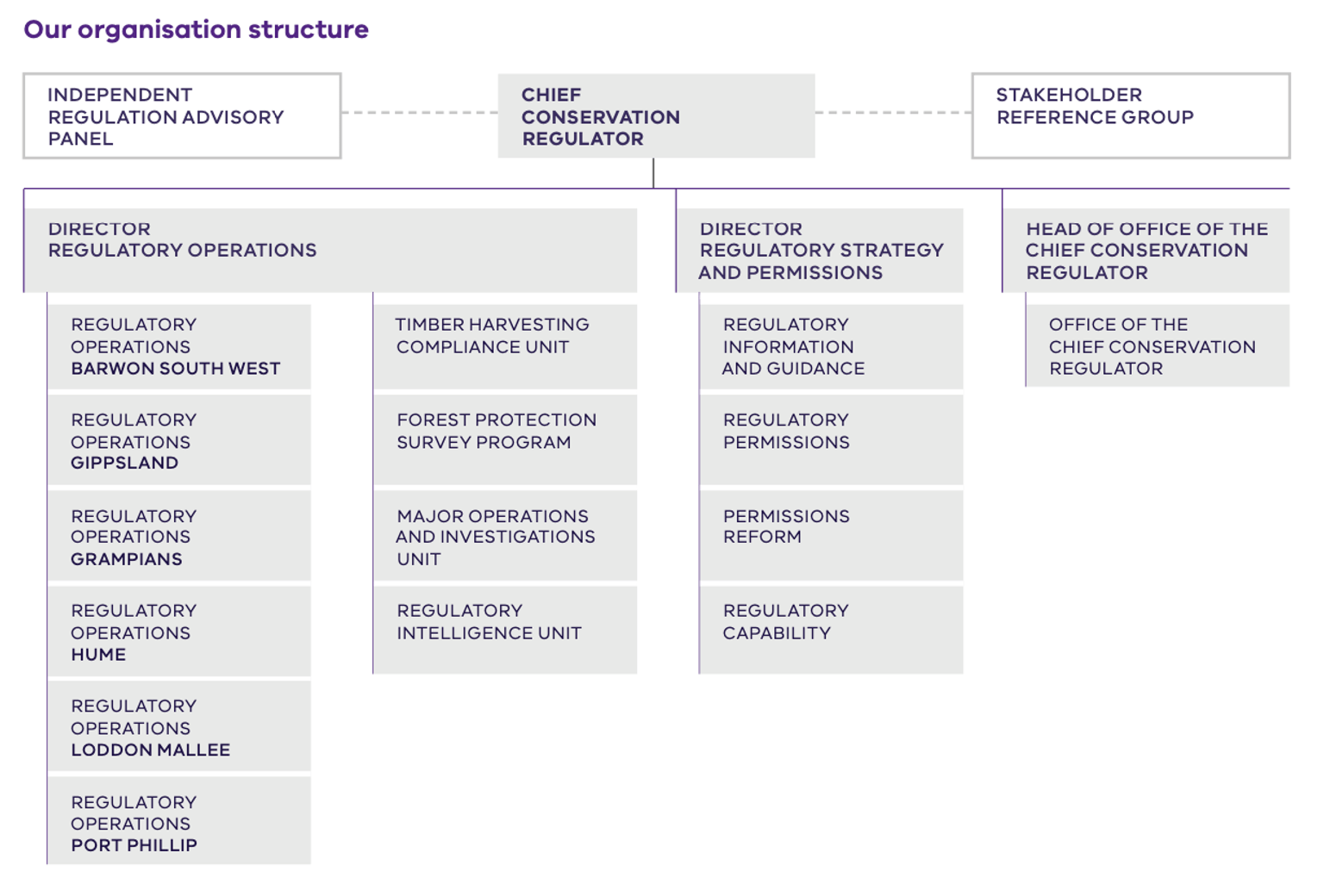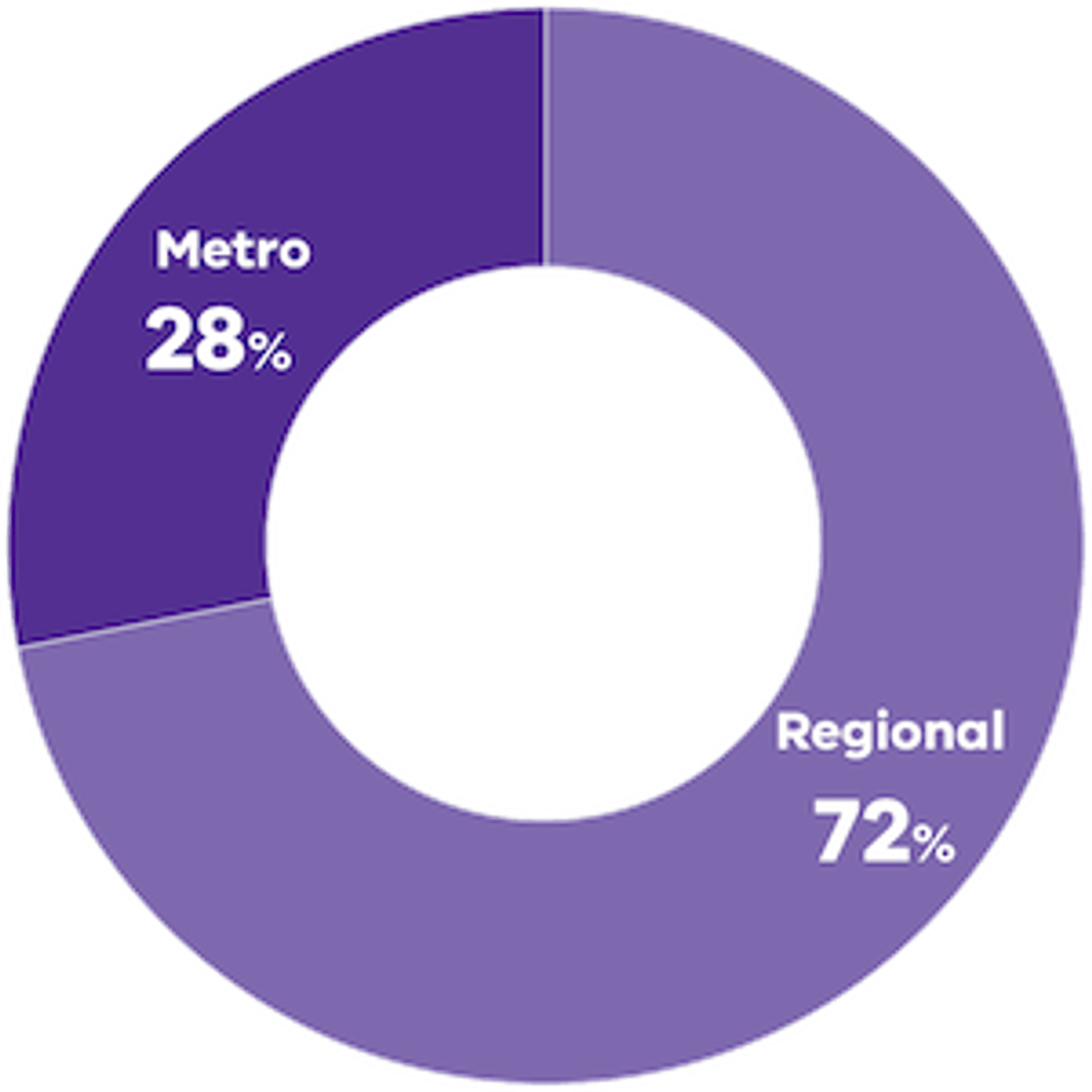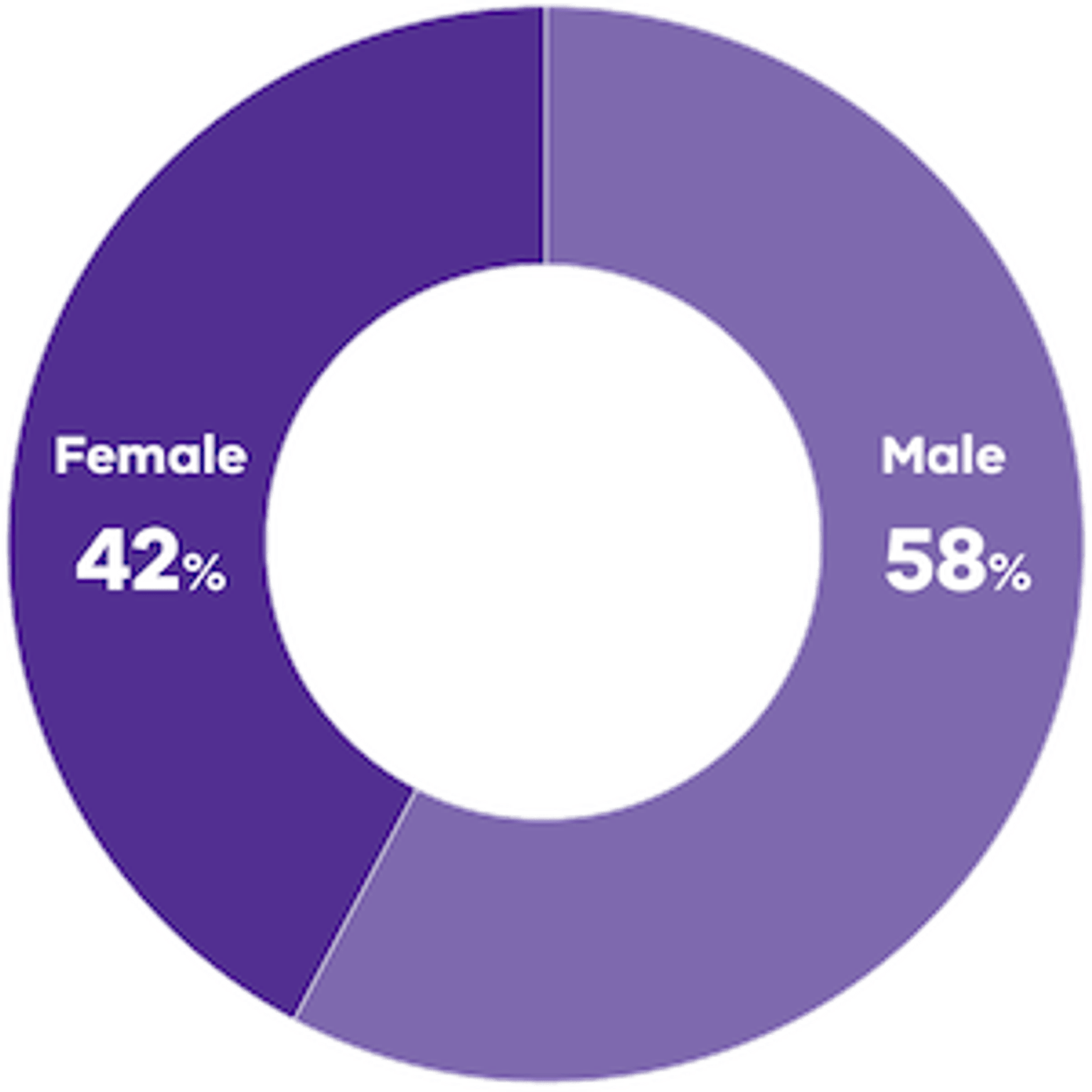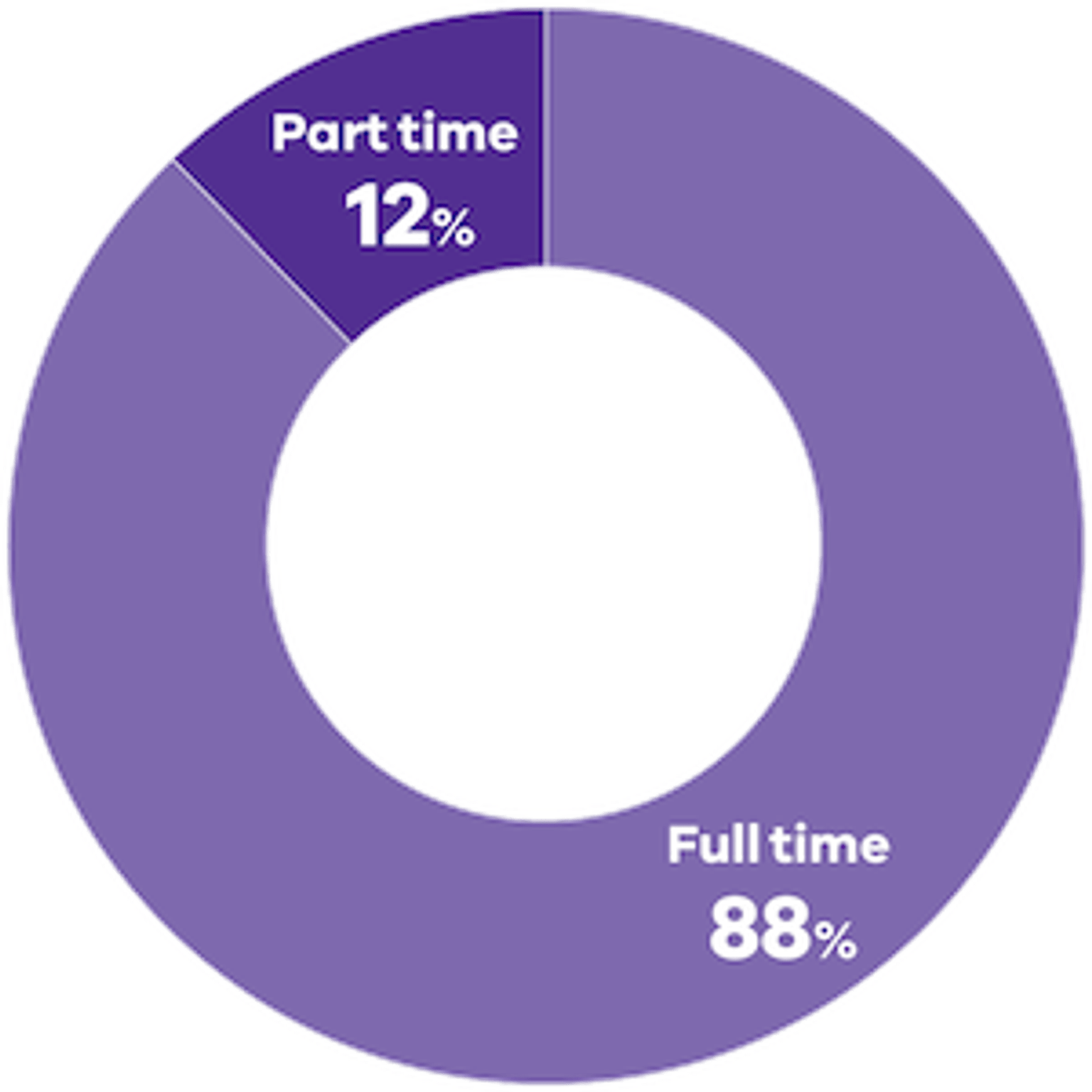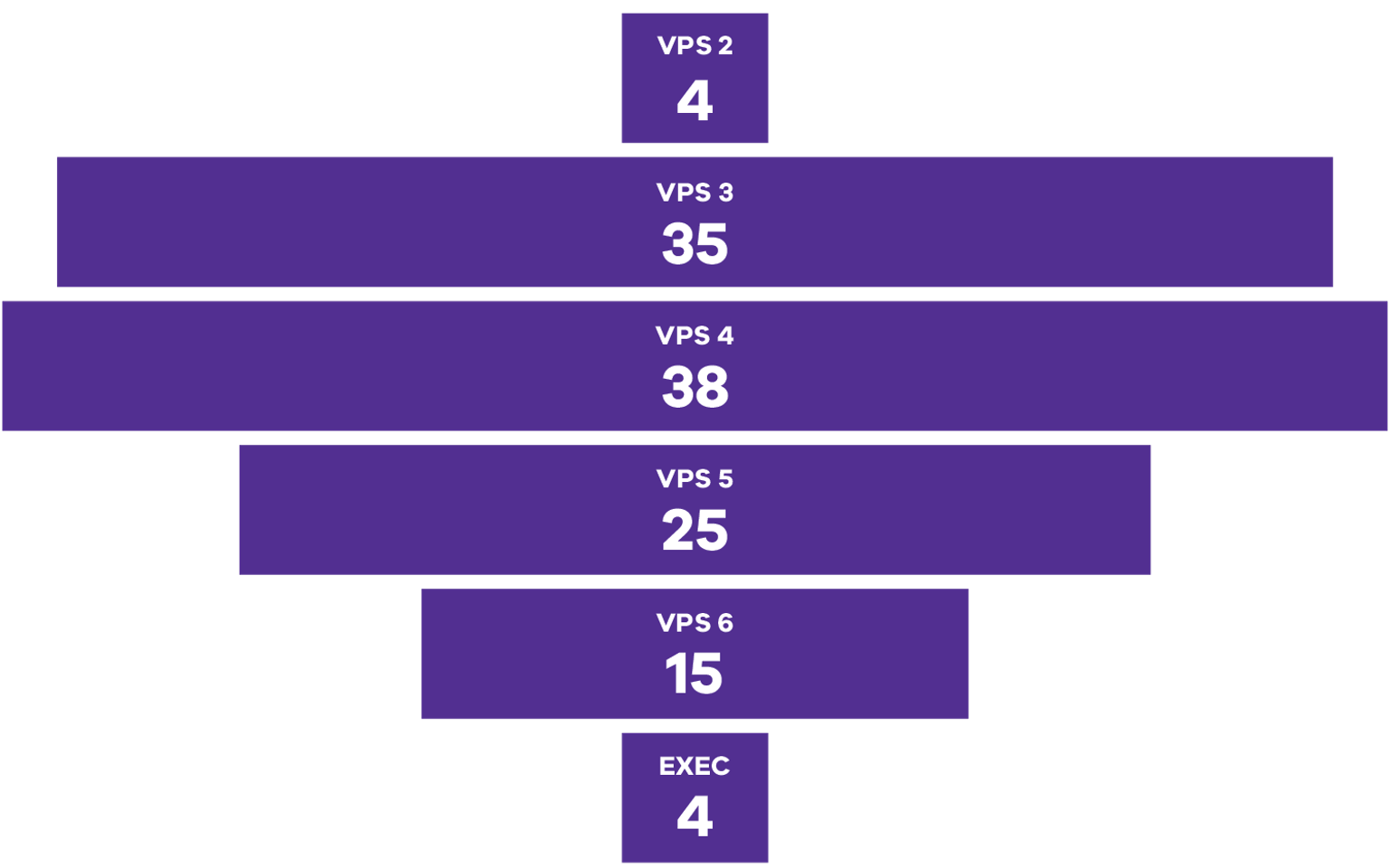Our organisational structure
The Chief Conservation Regulator leads the Conservation Regulator. There are 3 business units reporting to the Chief.
Office of the Chief Conservation Regulator
Delivering strategic coordination and business management support, and advice to the Chief.
Regulatory Strategy and Permissions Branch
Delivering regulatory policy, strategy, operational procedures, capability development, permissions reform, and statewide wildlife permissions delivery.
Regulatory Operations Branch
Planning and delivering statewide operational programs, including support for and monitoring of compliance, and enforcement of the law.
Our people
Advisory groups
Independent Regulation Advisory Committee
An Independent Regulation Advisory Panel (IRAP) was established in 2019 and comprises three members who are experts in the field of environmental regulation.
The role of IRAP is to provide advice to the Chief Conservation Regulator to support the pursuit of regulatory excellence.
The responsibilities of IRAP include:
- Providing advice to the Chief on best practice regulation
- Providing advice to the Chief on the Conservation Regulator’s settings for regulatory policy and governance, and operational oversight
- Reviewing matters referred to IRAP by the Chief.
Stakeholder Reference Group
The Stakeholder Reference Group includes representatives from environmental non-government organisations, industry, local government and community organisations.
The Stakeholder Reference Group provides advice to the Chief Conservation Regulator on:
- The drivers leading to breaches of regulations
- The design and delivery of an effective mix of regulatory activities to support compliance
- The effectiveness and appropriateness of our communication and engagement approaches
- Opportunities for improvement.
Updated
